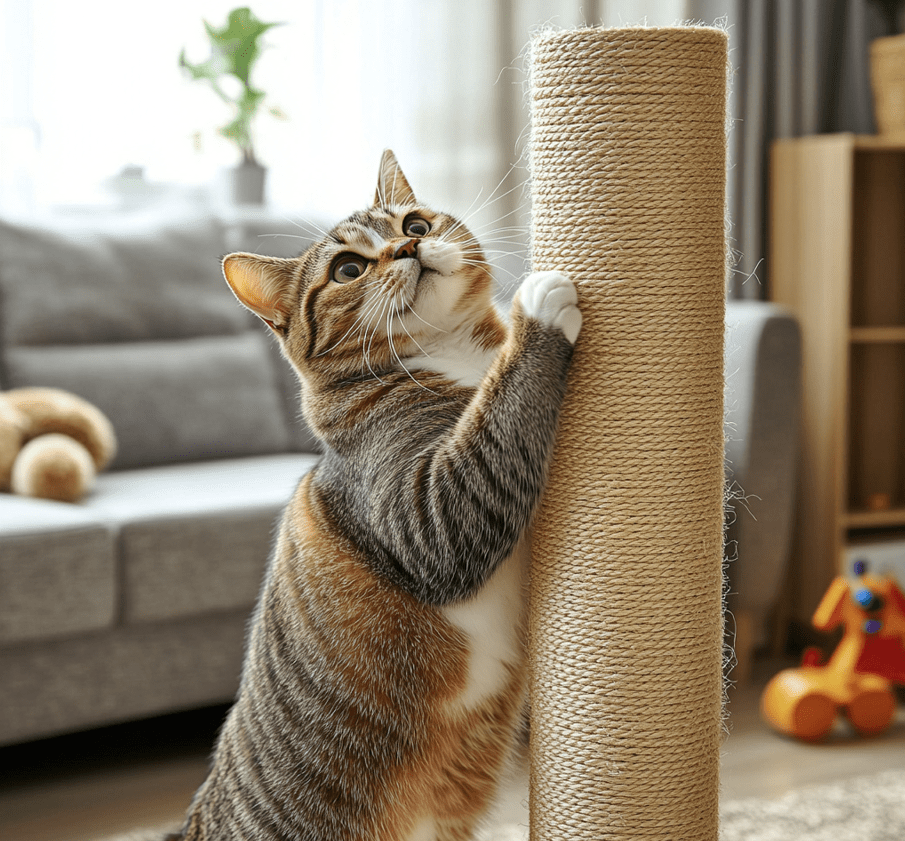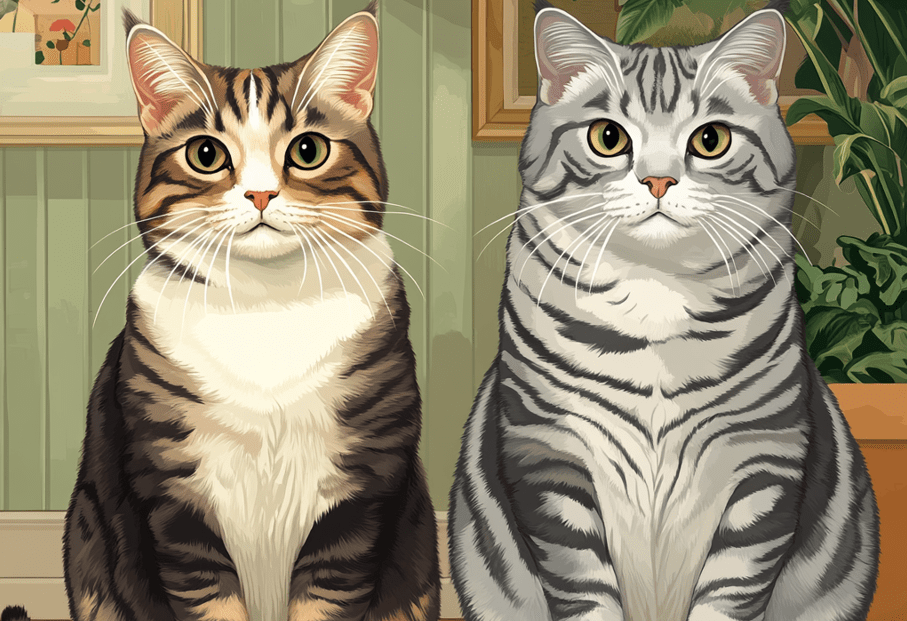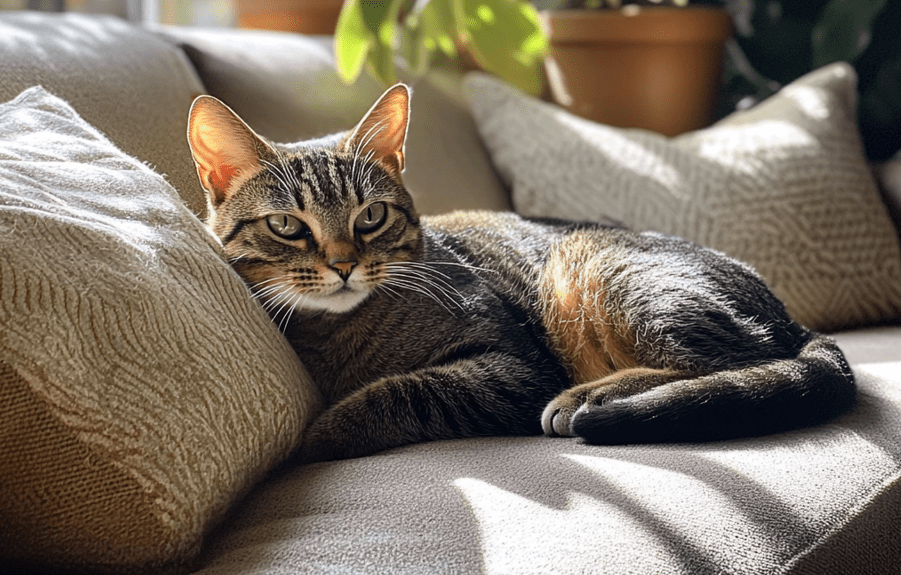
Domestic Shorthair cats, with their vibrant personalities and diverse coat patterns, are cherished companions in countless homes. However, many owners notice their Domestic Shorthair hiding under furniture, in closets, or behind curtains, sparking concern about their well-being. Hiding is a natural feline behavior, but it can also signal stress, fear, or health issues. This comprehensive guide explores why your Domestic Shorthair cat hides, what it means, and how to create a safe, comforting environment to help them thrive. By understanding their instincts and needs, you can strengthen your bond and ensure their happiness.
Understanding Why Domestic Shorthairs Hide
Hiding is deeply rooted in feline instincts. Domestic Shorthairs, like their wild ancestors, seek safe spaces to observe their surroundings, rest, or retreat from perceived threats. While occasional hiding is normal, excessive or sudden hiding may indicate underlying issues. Let’s explore the primary reasons your Domestic Shorthair cat might be hiding:
1. Natural Instincts
Cats are both predators and prey in the wild. Domestic Shorthairs retain instincts to seek secure spots where they can:
Observe Safely: High perches or tucked-away corners allow them to monitor their environment without being seen.
Rest Securely: Hiding spots provide a sense of safety for undisturbed naps.
Regulate Stimulation: Cats retreat to quiet areas to avoid overstimulation from noise or activity.
2. Stress or Anxiety
Domestic Shorthairs are sensitive to changes in their environment. Common stressors include:
New Environments: Moving to a new home or rearranging furniture can unsettle your cat.
Household Changes: New pets, people, or babies may trigger anxiety.
Loud Noises: Vacuum cleaners, fireworks, or construction sounds can drive cats to hide.
Lack of Routine: Inconsistent feeding or play schedules can make cats feel insecure.
3. Fear or Perceived Threats
Even minor events can seem threatening to a Domestic Shorthair:
Strangers or Visitors: Unfamiliar people may cause your cat to retreat.
Other Pets: Aggressive or dominant animals in the home can intimidate your cat.
Sudden Movements: Quick gestures or unexpected actions may startle them.
4. Health Issues
Hiding can be a sign of physical discomfort or illness. Cats instinctively conceal pain to avoid appearing vulnerable. Potential health-related causes include:

Pain or Injury: Dental issues, arthritis, or injuries may prompt hiding.
Illness: Conditions like urinary tract infections, kidney disease, or digestive problems can make cats withdraw.
Aging: Senior Domestic Shorthairs may hide more due to reduced mobility or sensory decline.
5. Personality Traits
Every Domestic Shorthair has a unique personality. Some are naturally shy or introverted, preferring solitude over constant interaction. Others may hide during specific times, like when the house is busy, to enjoy quiet moments.
6. Boredom or Lack of Stimulation
A lack of mental or physical engagement can lead to hiding as a form of disengagement. Domestic Shorthairs need enrichment to stay active and curious.
By identifying the cause of your cat’s hiding, you can take targeted steps to make them feel secure and confident.
Is Hiding Normal or a Cause for Concern?
Occasional hiding is perfectly normal for Domestic Shorthairs, especially in response to temporary disruptions like guests or loud noises. However, you should investigate further if:
1.Hiding becomes excessive or constant.
2.Your cat stops eating, drinking, or using the litter box.
3.They show signs of distress, such as aggression, lethargy, or vocalizing.
4.Hiding is accompanied by physical symptoms like vomiting, limping, or weight loss.
Monitoring your cat’s behavior and environment will help you distinguish between normal hiding and a potential problem.
How to Spot Signs of Stress or Health Issues
To determine why your Domestic Shorthair is hiding, watch for these clues:
Behavioral Signs
Avoiding Interaction: Refusing to play, cuddle, or engage with family members.
Litter Box Issues: Urinating or defecating outside the box due to stress or illness.
Over-Grooming: Excessive licking or fur loss, often linked to anxiety.
Aggression or Fearfulness: Hissing, swatting, or cowering when approached.
Physical Signs

Weight Changes: Unexplained weight loss or gain may indicate health problems.
Changes in Appetite or Thirst: Reduced eating or excessive drinking can signal illness.
Lethargy: Sleeping more than usual or lacking energy for play.
Visible Discomfort: Squinting, limping, or difficulty jumping.
If you notice these symptoms alongside hiding, consult a veterinarian to rule out medical issues and address behavioral concerns.
How to Make Your Domestic Shorthair Feel Safe
Creating a secure, welcoming environment is key to reducing hiding and boosting your Domestic Shorthair’s confidence. Here are practical, actionable strategies:
1. Provide Safe Hiding Spots
Rather than discouraging hiding, offer designated safe spaces where your cat can retreat comfortably:
Cat Trees or Perches: Elevated spots allow your cat to observe from a secure height.
Cozy Beds or Igloos: Enclosed beds provide a snug, private retreat.
Cardboard Boxes: Simple boxes with soft blankets are irresistible to cats.
Quiet Corners: Set up a hiding spot in a low-traffic area, like a spare room or closet.
Ensure these spaces are always accessible and free from disturbances.
2. Optimize the Home Environment
Make your home a stress-free sanctuary for your Domestic Shorthair:
Minimize Noise: Use white noise machines or keep windows closed during loud events.
Control Traffic: Limit visitor access to your cat’s favorite areas.
Scent Stability: Avoid strong air fresheners or cleaning products that may disrupt your cat’s sense of familiarity.
3. Enrich Their World
A stimulated cat is less likely to hide out of boredom or anxiety:
Interactive Toys: Feather wands, laser pointers, or puzzle feeders engage their hunting instincts.
Scratching Posts: Provide multiple posts to satisfy natural scratching needs.
Window Perches: Let your cat watch birds or outdoor activity for entertainment.
Rotating Toys: Introduce new toys periodically to keep things fresh.
Aim for 15-30 minutes of play daily to keep your Domestic Shorthair active and happy.
4. Maintain a Consistent Routine
Cats thrive on predictability. Establish a reliable schedule for:
Feeding: Offer meals at the same times each day.
Litter Box Maintenance: Scoop daily and clean boxes weekly.
Play and Bonding: Dedicate time for interaction to build trust.
Consistency reassures your Domestic Shorthair, reducing stress-related hiding.
5. Use Positive Reinforcement
Encourage your cat to explore and socialize with gentle rewards:
Treats: Offer healthy treats when they approach or engage.
Praise: Speak softly and avoid sudden movements to build confidence.
Patience: Let your cat come to you rather than forcing interaction.
Avoid punishment, as it can increase fear and drive them to hide more.
6. Address Stress Triggers
Identify and mitigate sources of anxiety:
Introduce Changes Gradually: Slowly acclimate your cat to new people, pets, or environments.
Pheromone Products: Feliway diffusers or sprays mimic calming feline pheromones.
Safe Introductions: Use gradual, supervised introductions for new pets or family members.
7. Monitor Health Proactively
Regular veterinary care prevents and detects issues that cause hiding:
Annual Checkups: Schedule wellness exams to catch problems early.
Dental Care: Poor oral health can cause pain and withdrawal.
Weight Management: Keep your cat at a healthy weight to avoid mobility issues.
Parasite Control: Fleas or worms can cause discomfort, prompting hiding.
If hiding persists, ask your vet about behavioral consultations or tests for underlying conditions.
8. Create Bonding Opportunities
Strengthen your relationship to make your Domestic Shorthair feel secure:
Quiet Time: Sit near your cat without forcing interaction, letting them approach on their terms.
Grooming: Gentle brushing can be soothing and build trust.
Playful Engagement: Use toys to mimic hunting, fostering confidence and connection.
A strong bond encourages your cat to spend less time hiding and more time with you.
Special Considerations for Domestic Shorthairs
Kittens
Young Domestic Shorthairs may hide as they adjust to new environments. Provide extra hiding spots, socialize them gently, and ensure they feel safe exploring.

Senior Cats
Older Domestic Shorthairs may hide due to arthritis, vision loss, or cognitive decline. Offer low, accessible hiding spots and consult your vet about pain management or supplements.
Rescued or Shy Cats
Adopted Domestic Shorthairs with unknown histories may hide due to past trauma. Patience, quiet spaces, and gradual trust-building are essential.
Common Myths About Cats Hiding
Let’s clear up misconceptions that can confuse owners:
Myth 1: Hiding Means Your Cat Doesn’t Like You. Hiding is often about instincts or stress, not a lack of affection.
Myth 2: Cats Always Hide When Sick. While illness can cause hiding, many cats hide for non-medical reasons like stress or personality.
Myth 3: Forcing a Cat Out of Hiding Helps. Dragging your cat from their safe space increases fear and mistrust.
Myth 4: Hiding Stops on Its Own. Persistent hiding requires investigation to address root causes.
Understanding these truths helps you respond to your Domestic Shorthair’s needs effectively.
When to Seek Professional Help
If your Domestic Shorthair’s hiding doesn’t improve with home adjustments, seek expert guidance:
Veterinarian: Rule out medical issues like infections, pain, or chronic conditions.
Feline Behaviorist: A specialist can assess environmental or psychological triggers.
Emergency Signs: Immediate care is needed if your cat stops eating, drinking, or using the litter box, or shows severe lethargy or pain.
Early intervention prevents long-term issues and ensures your cat’s well-being.
Living with a Domestic Shorthair Who Hides
If hiding is part of your Domestic Shorthair’s personality, embrace it while fostering confidence:
Accept Their Nature: Respect their need for solitude without taking it personally.
Track Patterns: Note when and where they hide to identify triggers.
Celebrate Progress: Small steps, like spending more time in open spaces, are victories.
Community Support: Connect with other cat owners online or locally for tips and encouragement.
With time and care, your cat can feel secure enough to hide less and engage more.
Conclusion

Hiding is a natural behavior for Domestic Shorthair cats, reflecting their instincts, personalities, or responses to stress and health issues. By understanding why your cat hides—whether due to fear, boredom, or discomfort—you can take meaningful steps to make them feel safe. From creating cozy retreats and enriching their environment to maintaining routines and seeking veterinary care, your efforts will help your Domestic Shorthair flourish. With patience and love, you’ll build a trusting bond, encouraging your cat to step out of the shadows and into a confident, happy life.
For tailored advice, consult your veterinarian or a feline behaviorist, and share this guide to help other Domestic Shorthair owners create a nurturing home for their cats!



